You may have read my cruise report on sailing a brand new Excess catamaran through the notorious waters of the Bay of Biscay. My account of the heavy seas and strong winds are real – and the withdrawal of all the two of my crew members due to sea sickness makes a strong point here. Right now I am on another delivery trip, it´s a again a 38-feet Excess 11 catamaran and this time it´s the Biscay northbound, the cat has to be sailed to Germany. Well, what shall I say? Different ship, same experiences …
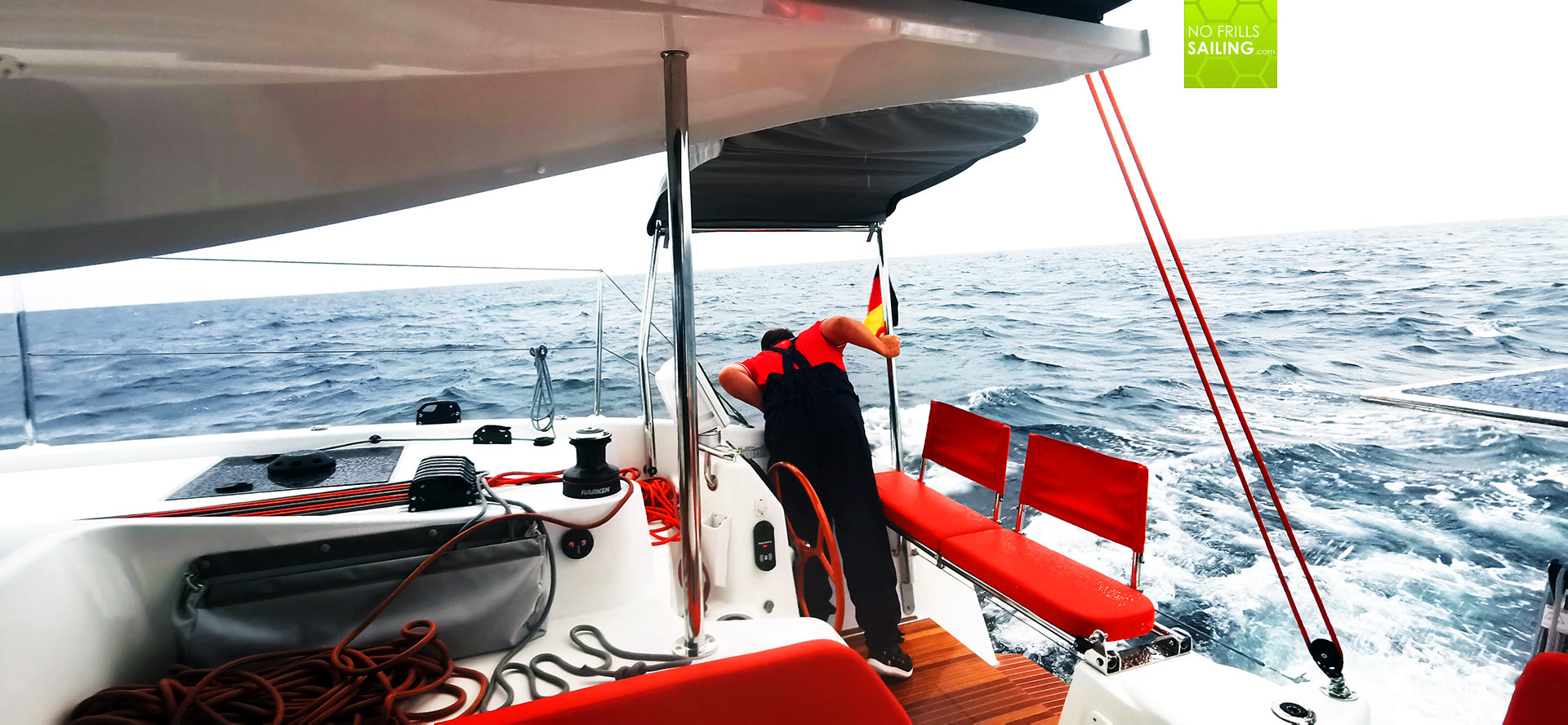
Although in the midst of the summer season this time the God of the Winds isn´t all too generous to us: Headwinds, high windage and ever building seas make this trip as well a stormy one. Definitely not a vocational cruise for sure. Sometimes, mostly during my night watches, when a gust breaks in and the catamaran´s autopilot struggles to keep her on course in the breaking waves, I think of the unthinkable: What if this cat suddenly capsizes? And what to do then?
In-built safety: Can a Cat capsize?
Let´s rewind here and set the clock back 2 weeks. I inspect the cat in the commissioning yard still on dry land. I roam the hulls, officially looking for scratches or inconsistencies, and between them two I find something interesting. Two big hatches, wide enough to fit a grown-up man through. I take a closer look.
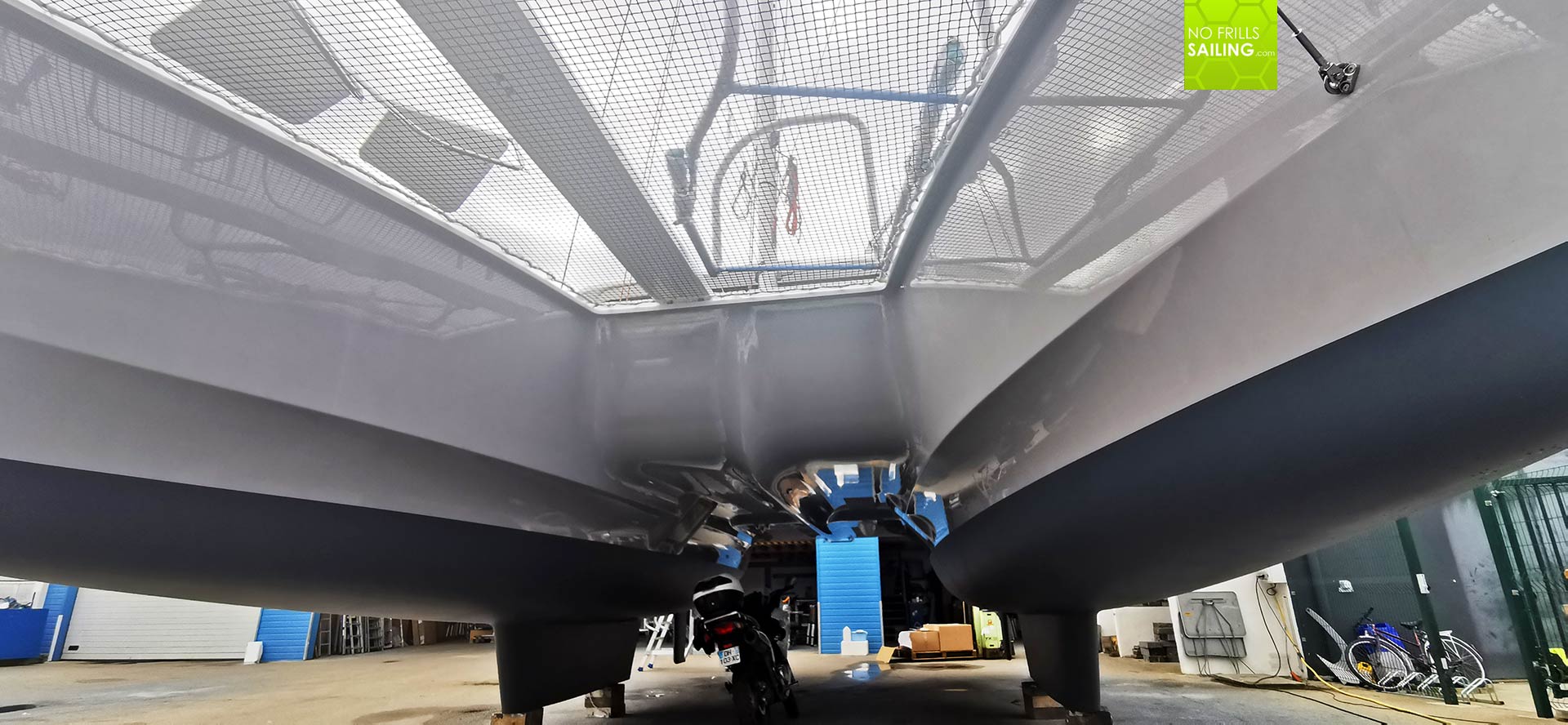
To obtain the Cat A CE-certification a catamaran must offer means of escaping. Since a monohull is self-righting, meaning that it is virtually impossible to capsize and not to return to an upright state (unless the keel is off), a normal monohulled sailboat does only need escape hatches. Our cat does have them too – just at a very different position.
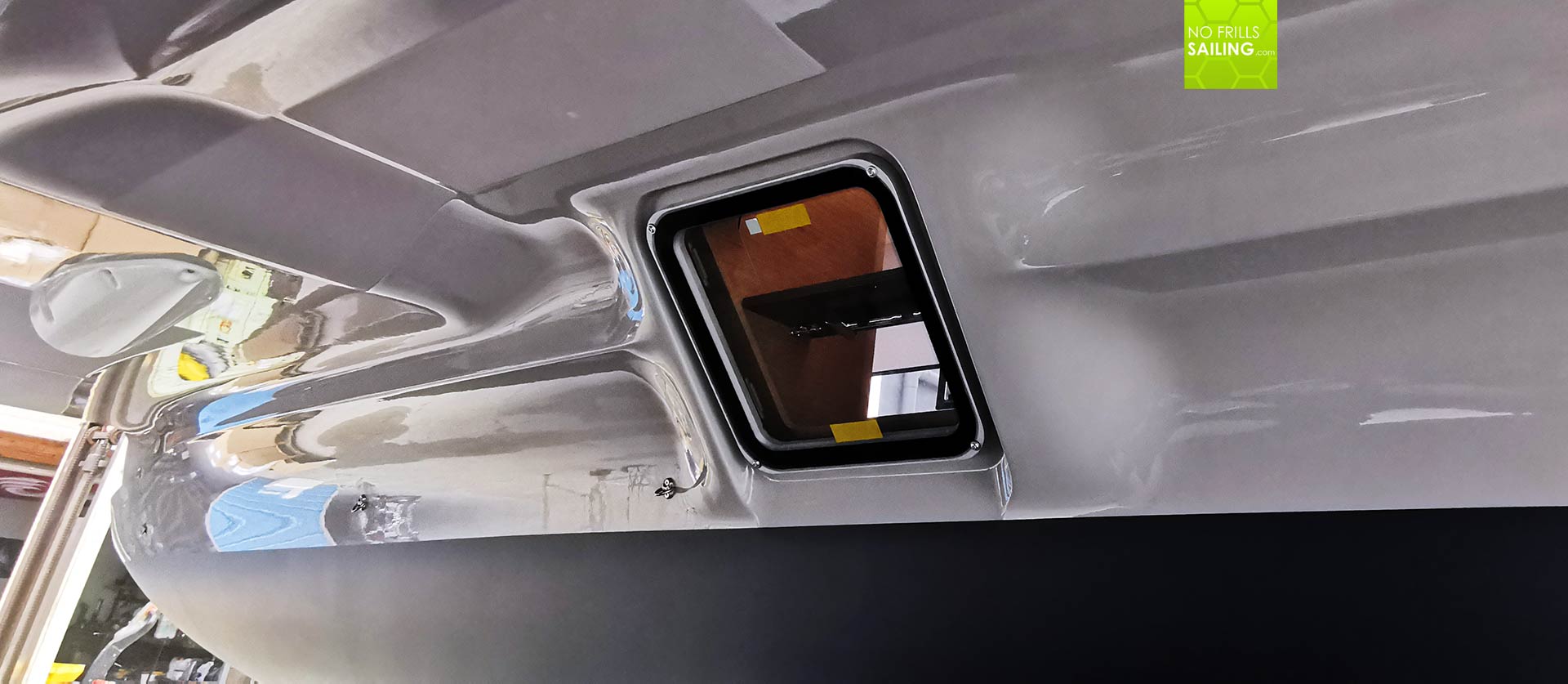
The hatches are of the highest, rigid category. In our case made by French market leader Goiot Systems of Nantes. Massive aluminium frames, fitted by screws and sealed by a thick sealant from the outside to the catamaran, no wave can break inside. I have witnessed this multiple times during my sailing on the cat how massive amounts of fierce waters battered the windows – with no effect on them. So, you can literally bet your life on these parts.
Just in case: What is a Catamaran capsizes?
But what if the catastrophy happens? Well, I´ve checked the system and the code of conduct is very easy and fast. If you happen to find yourself in a capsized cat – everything is upside down now – first of all the clear window of the hatch will provide some natural light which is essential to shake off the first shock, make a clear thought and find the place to be.
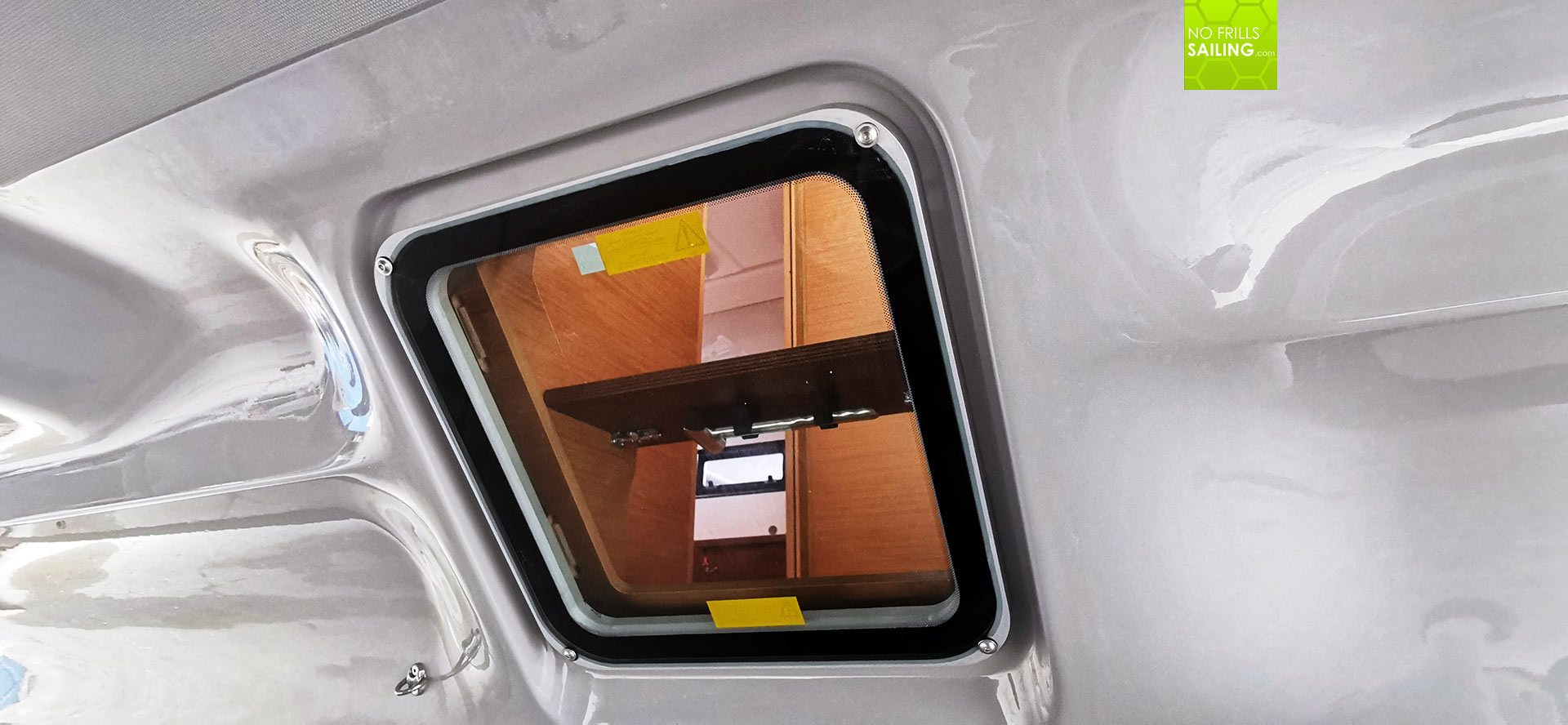
The hatch is built right under the entryway staircase down from the saloon into the two hulls, so you will have to remove the middle-stair. That is done (on my Excess catamaran) by unlocking two heasy lock bars and taking out the step of the frame. On the Excess the step has a secondary safety which is a click-in-bar holding it in place until removed by hand – so no fear that the step will hit you. Remember, when capsized, you will be working hand over head.
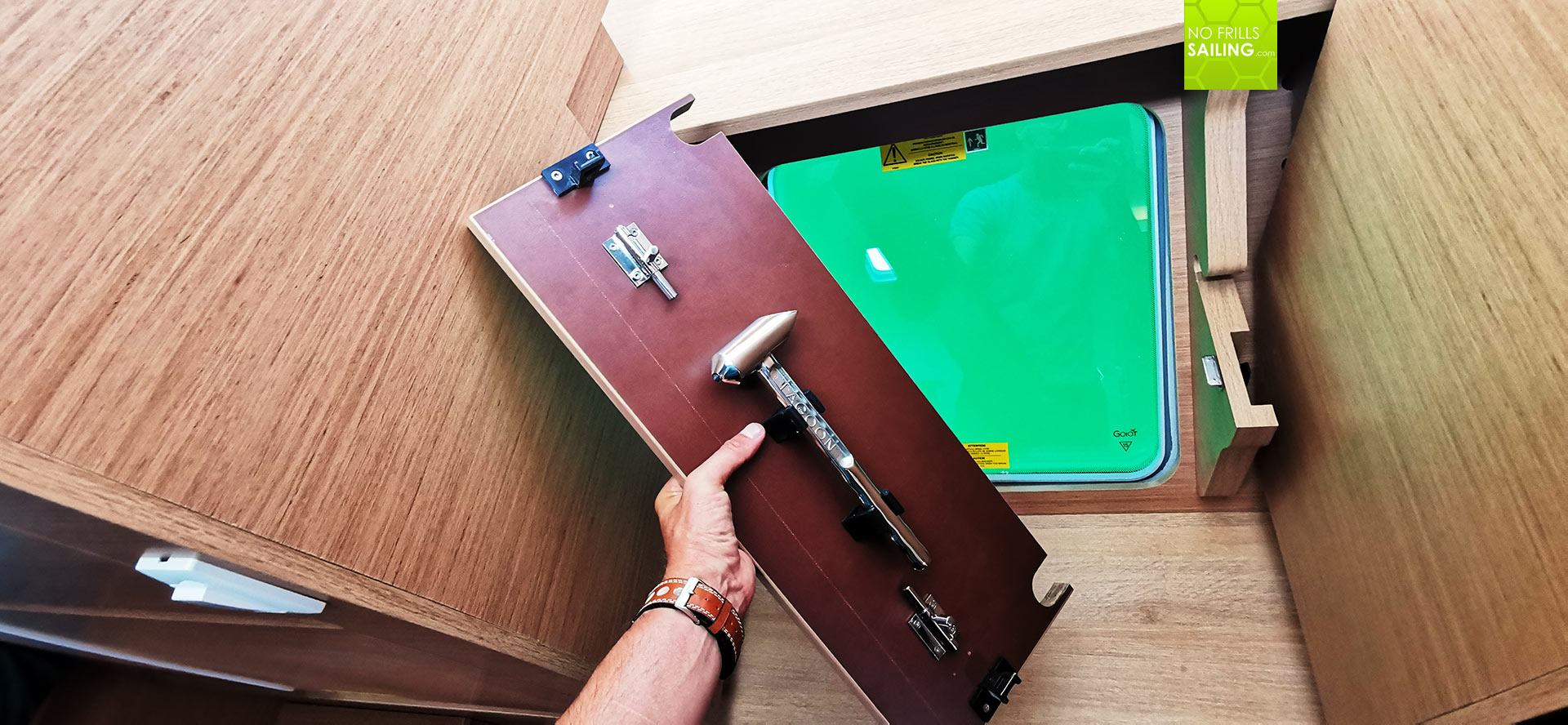
Right under this hatch there is a small massive steel hammer. It´s the kind we know of buses or subway trains. By hitting the hatches glass you will smash it – cover your eyes and protect your face! When the glass is broken, you may clear splinters and finally climb out of the boat. Easier said than done: I can imagine that in such a situation, possibly in heavy seas, maybe injured with fractures or contusions, this is quite an undertaking.
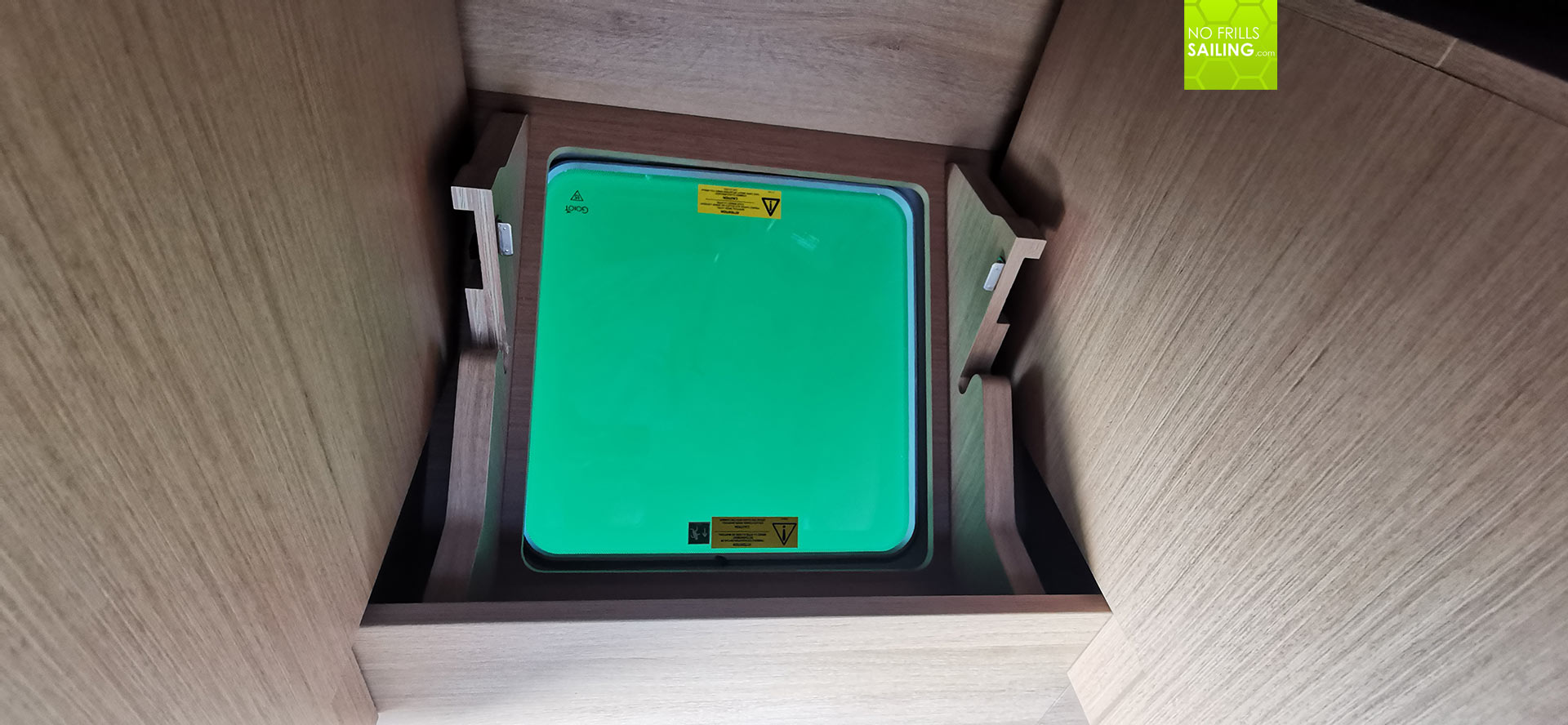
Now, finding yourself in the middle between the two hulls on the capsized catamaran must be as frightening as being inside: With the boat still washed over by roaring waves and brutal seas, maybe the rigging still partially attached down below the cat, jerking and wrenching the poor hulk. For having something to hold on to, the cat has a series of padeyes right aft of the hatch (see my first pictures in on dry land for reference) where a keen skipper might fit a lifeline to.
A better question – how NOT to capsize a multihull
But can a cat capsize? Well, unfortunately yes. A multihull has no keel. Thus no weight down below, hence no lever and no righting moment. The stability of a catamaran is determined by his form (hence: form-stability). Looking at stability curves you might notice that a catamaran has a huge amount of stability in relation to heeling – for the first degrees. It is much, much harder zo making a catamaran heel 5 degrees, for example. It needs much more power to do so than to heel a monohull.
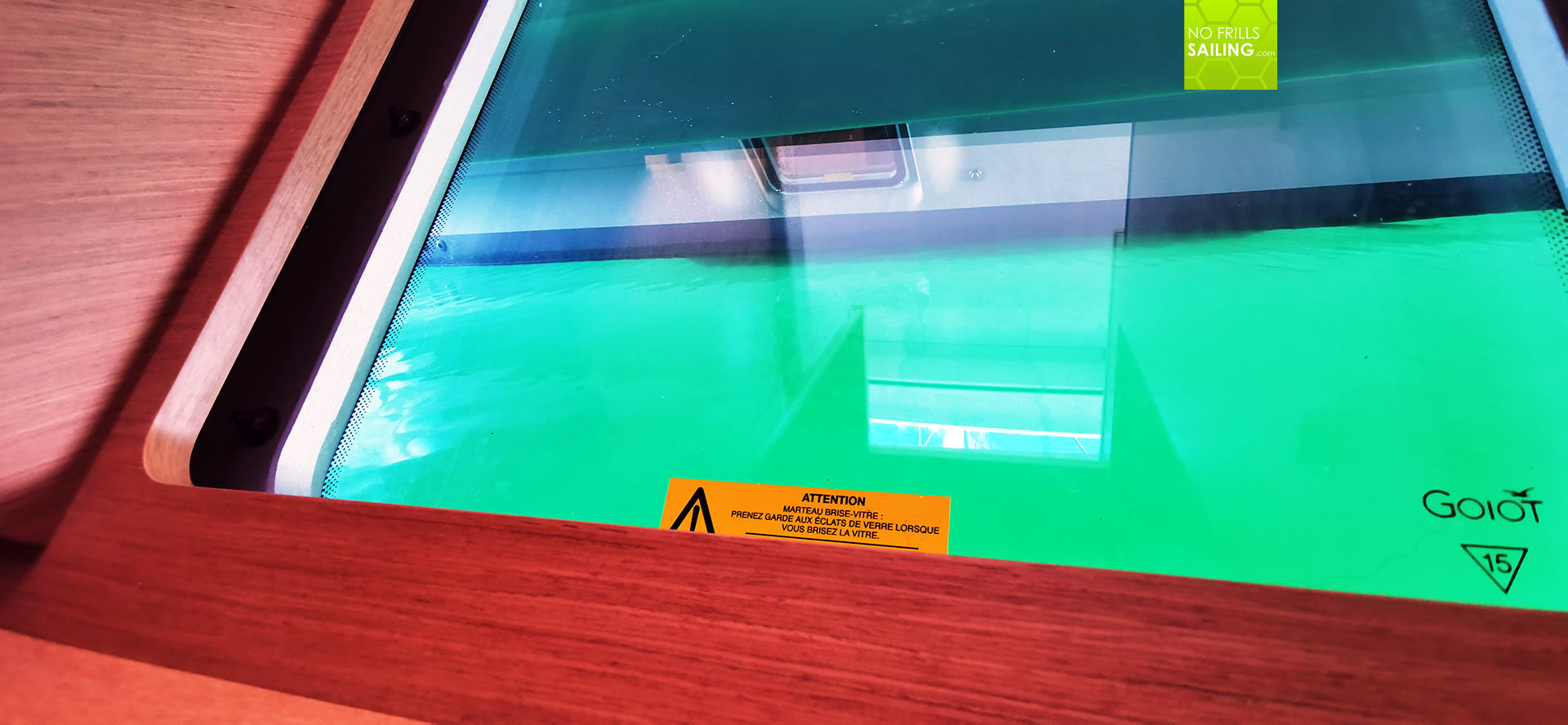
On the other hand, once over 15 degrees heeling (this is a guide value), the catamaran is lost. It will suddenly hit the tilting point and tip over. Once done, there is no safety net and no fallback, the capsize is imminent and cannot prevented anymore. Remember: A catamaran is very, very stable and safe in normal sailing conditions and even in heavy weather. But a skipper must respect under all circumstances the reefing threshold of his catamaran and reduce sails area accordingly. In this – at least that goes for my Excess 11 – this threshold seems very high and will nonetheless bear enough safety margin. For example, on the reefing chart it is recommended to put in the first reef in the main at 23 knots AWS. 23 knots! I felt it necessary to reef at 19-20 knots …
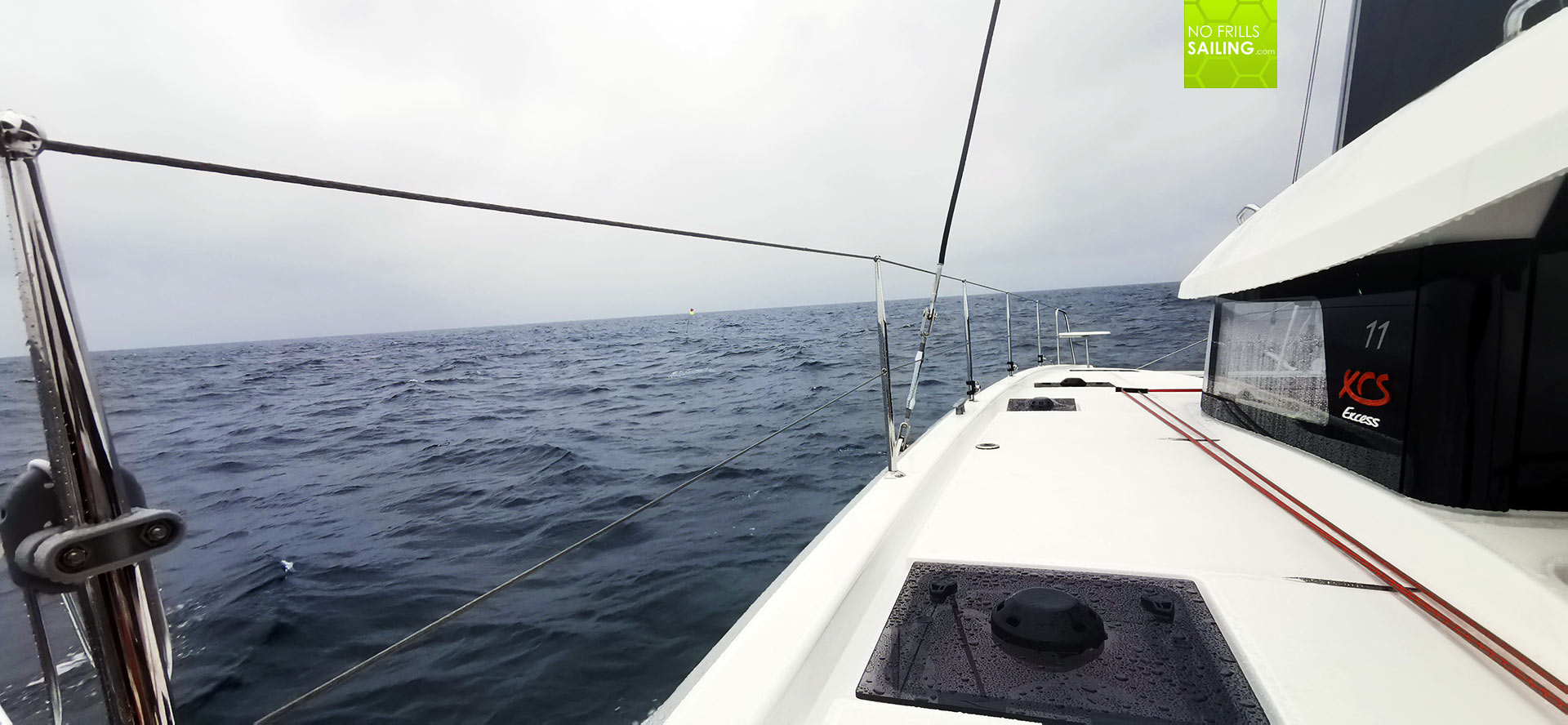
So, with this knowledge and my first couple of hundred miles of experience on a monohull I can reassure you, dearest readers, with peace of conscience: Under normal cruising circumstances, even in foul weather, you catamaran won´t tilt and is not unstable nor unsafe. It takes a load full of massive energy to capsize a catamaran or a an unusually incompetent skipper who dangerously ignores the code of conduct. Just in case: You now know how to escape – and don´t forget to activate the EPIRB. Be safe out there!
You might as well find interesting to read:
Safety concept for a boat.
Keel types in monohulls
All catamaran-related articles by clicking on this hashtag #excesscatamaran
